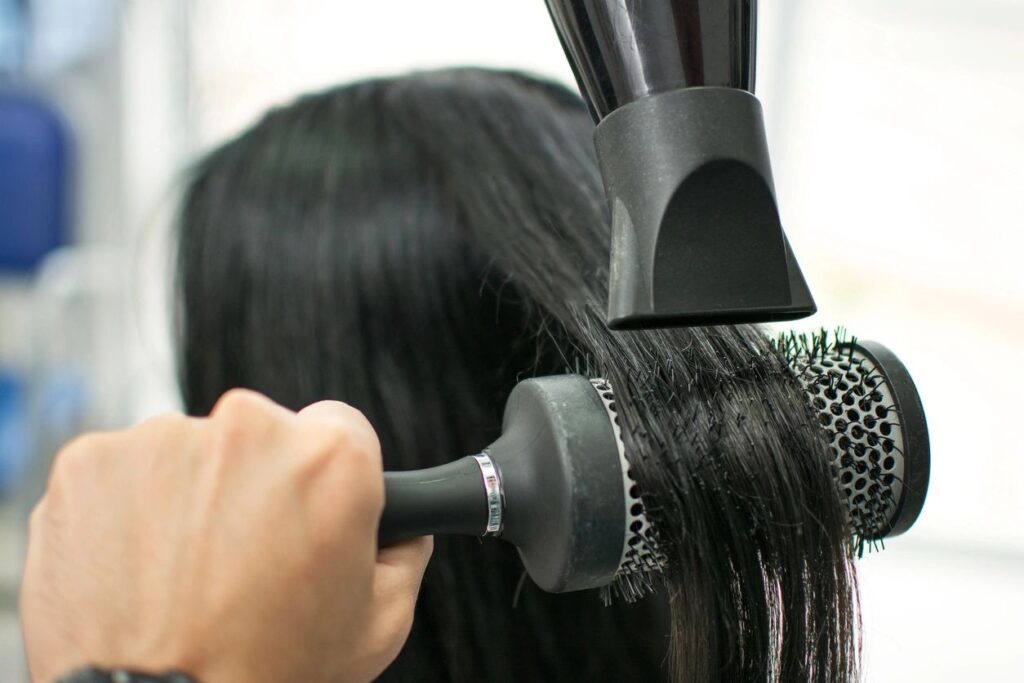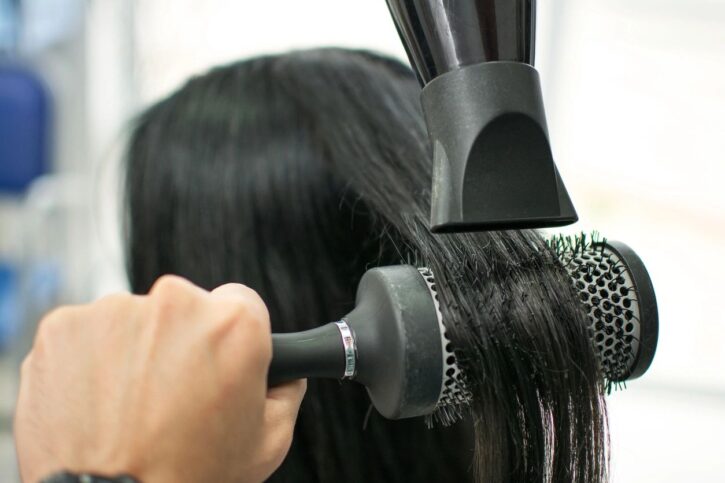
Types of Hair Dryer and What to Look for In One
The right hair dryer for the right hair type can help individuals dry their hair quicker and save time. By also combining the use of a hair dryer with other hair techniques like brushing, spray styling, and other tools, different hairstyles can easily be pulled off.
Main Hair Dryer Types
There are numerous types of hair dryers in the market and may characteristically be unique. Thus, before trying to buy a hair dryer, consumers should find out more about each kind including those pros and cons that they need to look out for.
- Negative Ion Hair Dryer
For ionic hair dryers, negative ions are released when this type of hair dryer is powered on. There are positive ions on wet hair which come in contact with those negative ions from the hair dryer. When these two ions meet, they form a protective coating around the hair to lock in moisture.
Due to this phenomenon, this hair dryer aids to maintain the moisture content in the hair thereby reducing incidences of breakage and frizz due to its use. Thus, this kind of hair dryer works best for naturally curly or frizzy hair which is usually thick hair. This hair dryer type also promotes the body in the hair and bounce.
Hair drying time is also markedly reduced due to the above-mentioned ionic interactions.
It is a thing to note that ionic hair dryers are more expensive than the other types all because of the advantages that lead to less hair damage.
- Ceramic Hair Dryer
For ceramic hair dryers, a ceramic heater within the hair dryer heats air for a more even and less rough heat application. Some ceramic hair dryers are equipped with infrared technology. This produces long energy waves to permeate and dry the hair inside-out.
As it has a ceramic coating, it gives a uniformed temperature airflow and thus avoids overheating.
This kind of hair dryer is also costlier than the typical hair dryer.
Ceramic hair dryers are suitable for fine to normal hair and are also perfect for users with fragile hair helping to lift limping hair strands.
- Titanium Hair Dryer
Inside a titanium hair dryer, the air is heated using a titanium heater. Similar to the ceramic hair dryer, the titanium inside the hair dryer is said to heat air more evenly and aid in more stable heat conduction.
A titanium hair dryer speeds hair drying at twice the speed of a traditional hair dryer and at the same time keeps hair soft and smooth.
This kind of hair dryer typically has a lightweight body, thus, easy to hold and operate.
Titanium hair dryers are more suitable for thick and dense hair. It is less safe to use on thin, damaged hair. Drying short hair should also be cautioned as the heat titanium hair dryers produce is generally hotter than all the other types.
- Tourmaline Hair Dryer
Similar to an ionic hair dryer, a tourmaline hair dryer emits negative ions which counters the positive ions on wet hair. The ions on the heat produced cause water to break up and disperse fast from the hair. At the same time, tourmaline emits infrared heat like a ceramic hair dryer.
As Tourmaline is a gemstone, and with its ability to enhance hair dryer function, it follows that it is pricier. This type of hair dryer though is the fastest and also the safest to use among all the hair dryers heating hair evenly and gently.
It is very effective in preventing hair from flyaways and frizz.
Best Hair Dryer Shopping Considerations
Here are some factors to consider when looking for the best hair dryer to purchase:
- Power Settings
A lot of power is needed for a hair dryer to dry hair in a shorter period. It is generally gentler on the hair strands if they are not subjected to heat for long period. Some hair dryers used by professionals begin at 1,300 watts. When looking for the right hair dryer, try considering the lightweight and one that has the right voltage.
- Heat Settings
The more the heat and speed settings there are in a hair dryer, the varied the intensity levels can be given to the hair. Also, most hair dryers come with a cooling air button that helps seal down the hair cuticle, adding a further dose of shine.
- Air Nozzle Design
Hair dryer nozzles can be either diffused or concentrated types of nozzles. A diffuse nozzle disperses wind from an air duct where small holes are to decrease wind power and achieve its drying function. A concentrated nozzle on the other hand focuses the airflow emitted and dries the user’s hair more evenly.
- Flexible Design
Some hair dryers have retractable handles or have wire attachment rings for convenience and other design innovations. This makes some easier to use at home, to store, or bring about when traveling.
- Hair Repair Support
A lot of hair dryers support regimens for repairing damaged hair. This includes nano, water ions, hair collagen, and other sciences to protect the hair surface. Individuals who have damaged hair because of constant dying or who have fine hair should consider buying this type of hair dryer.
Best Hair Dryer Based on Hair Type
It is recommended that users also examine their hair texture and styling needs to guide their buying decisions. Here’s a summary of recommended hair dryers based on hair types:
- For thick, curly, or textured hair
If the hair dryer user has curly hair or coarse hair textures, a hair dryer with 2,000 – 2,500 watts drying power should be chosen as a less powerful dryer may find it easy to over-dry the hair. Dehydrated hair is prone to becoming sensitive and frizzy. It can also leave weak hair ends splitting.
- Fine to medium hair
For hair dryers, the general rule is that the thicker the hair, the higher the wattage needed. And so, for fine to medium coarsely textured hair, a hair dryer with a lower wattage may be advisable.
Also, a hair dryer with a long neck should be used for fine hair to add bounce or volume to the hair. Applying hair protectants is recommended too when using any hot tools to prevent frizz and breakage.




.gif)
